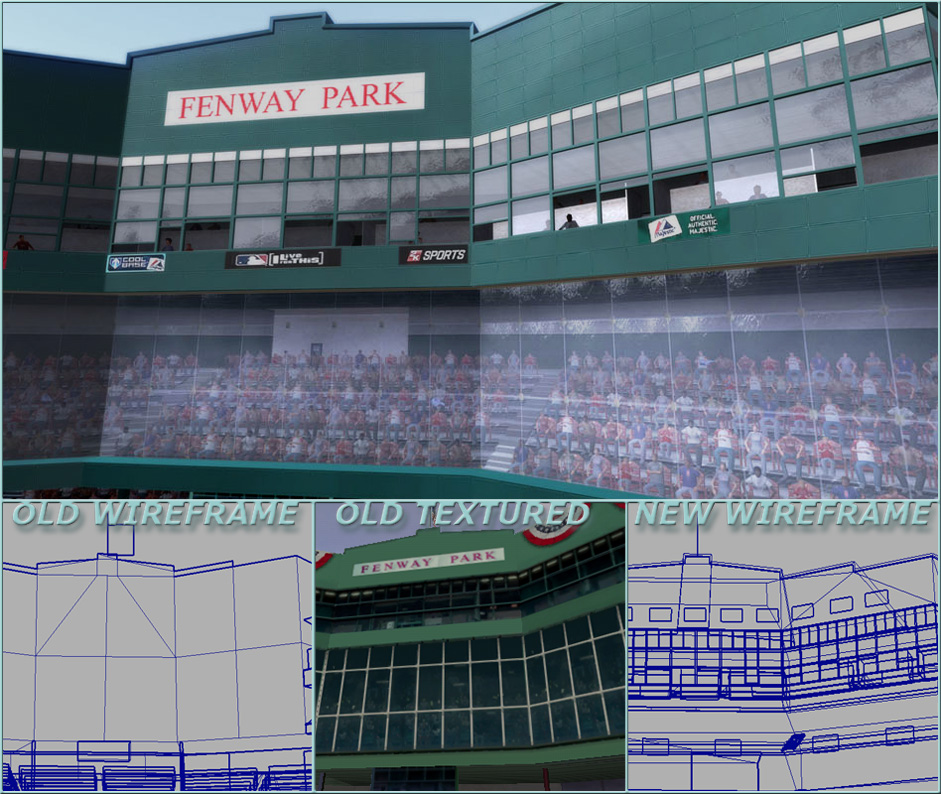

This is the press
structure/enclosed crowd section of
Modeling involved
creating: the stadium, outside environment, field, props, color/normal maps,
UV work, shadow volumes, and light glows; the crowd and sky were modeled &
animated by other artists. In addition to modeling/texture work (on a per
stadium basis, which would change from year to year), I was also responsible
for: collecting reference, lighting, optimizing, animating pause menu
cameras, integrating into the proprietary
Take2 shading system, and
placement of: collision detection, non-interactive characters, animated
props, jumbotrons, lense flares, foul poles, updateable advertisements, and
field shadow casting. I’m probably leaving out several things, but you get
the idea.
Because sports titles
are created in less than a year, there isn’t enough time to recreate all of
the major league stadiums from scratch. Instead, we retro-fitted the
original Xbox 3D models (I also
worked on) by improving the lighting/shaders, and remodeling essential areas
of the stadium. Each year we would recreate marquee areas of the larger
market stadiums and update the look to reflect changes in the real life
environments.
I modeled the
press/crowd structure behind home plate in